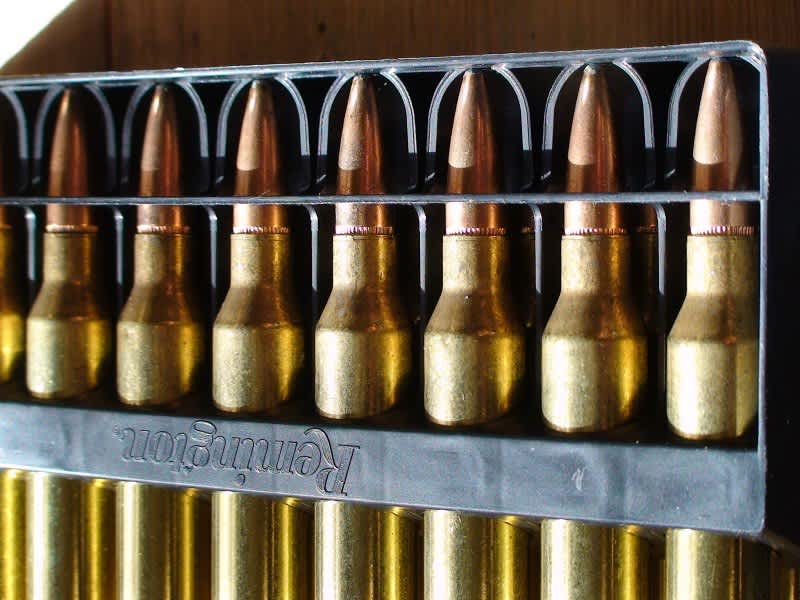Recoil Reduction Strategies
James Swan 11.14.13

The kick you get out of hunting and shooting your rifle or shotgun should be the enjoyment of shooting, not the recoil. If a rifle or a shotgun unleashes a strong recoil each time you pull the trigger, it can affect your accuracy and reduce the enjoyment of shooting as well as bruise your shoulder. It may even discourage a new shooter from learning to use firearms.
Recoil is the result of the gases created from the explosion of gunpowder that propels the bullet. The explosion in the chamber causes the bullet to go in one direction, while the recoil is what happens when the gases flow backwards in the chamber as the bullet leaves the barrel.
To reduce recoil, normal solutions include increasing the weight of the gun, providing some padding on the stock, and reducing the force of the gaseous explosion.
Aside from a shoulder pad on your vest or jacket, there are a number of additional recoil reducing pads on the market that are fairly inexpensive. As the pad compresses under the recoil, it turns the sharp jab into more of a push. Some are worn on your shoulder. Others are mounted on the stock of the shotgun or rifle.
Some new guns come with recoil pads already on the stock. Others come separately and are installed on the butt by a gunsmith, or someone else who knows how to insure the pad will not affect your accuracy.
If you want to shop for a recoil pad, Randy Wakeman’s review article at Chuckhawks.com is a good place to develop criteria for making a purchase.
Thick, spongy recoil pads obviously do a better job of absorbing the impact than thin hard ones, but there is a price. As the recoil pad compresses, it permits the comb of the stock to move rearward along the cheekbone, sometimes resulting in a black eye or bloody nose.

One way to prevent this is to have your gunstock custom fitted by cutting the stock to a certain length as well as adding a recoil pad. The gun will feel like an extension of your arms. The fitting will also improve your scores.
An example of a master fitter is Ed Aubert in California, who lives adjacent to the largest saltwater estuary in the world, the Suisun Marsh. Ed has been fitting gunstocks for over 50 years. He began with Abercrombie and Fitch. Then he did custom fitting work for Beretta, and finally went on his own. His clients have included John Wayne, Bing Crosby, Andy Devine, and Robert Stack.
Why have your stock fitted? “If you paid a thousand dollars for a suit, you’d want it fitted wouldn’t you?” Ed replied. “One thirty-second of an inch can throw you off at least four feet at 40 yards,” he said.
Another recoil reduction aid is a muzzle brake—a ventilated steel tube bored a little larger than the groove diameter of the barrel that is screwed into the end of the barrel. A brake adds a couple of inches of length to the barrel.
There is no change in a rifle’s ballistics with a muzzle brake. It works by releasing gas sideways. Accubrake, Magna-brake, Recoil Reducer, and BOSS are some popular muzzle brakes. They all claim a 40 to 50 percent reduction in recoil.
There are two considerations with a muzzle brake. The first is adapting your rifle to handle the brake, which is going to cost a couple bucks, and requires a gunsmith to make the adaptations.
The second is noise. Venting the gas sideways as it leaves the barrel is going to mean a louder report. You should always wear ear protection when shooting anyways, and if you’re using a muzzle brake, you should use the best you can afford at all times for your ears’ sake.
Reducing the powder in a shell also results in recoil reduction, but it also can affect trajectory and power. Remington Managed Recoil ammunition has changed my shooting. A Remington Managed Recoil 7mm Magnum cartridge with a 140-grain load performs the same as regular loads out to 200 yards with half the recoil. The key is a new specialized bullet. No need to lengthen the stock, change the weight of the gun, or shell out any money for gunsmiths. Federal also makes low-recoil loads for rifles and shotguns.
Remington uses special lighter bullets at standard velocity to cut down recoil, while Federal chose to keep bullet weights about the same while reducing velocity. If you’re a long-shot guy, you may want to find some other way to manage recoil rather than these new loads. For both brands, out to 150 yards there is no difference in accuracy between normal loads and the new.

